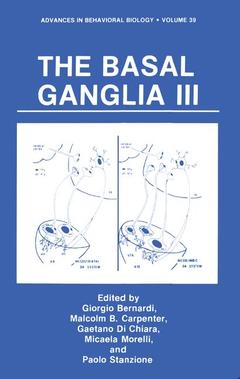This volume represents the collected papers presented at the Third Triennial Symposium of the International Basal Ganglia society (IBAGS) held at Capo Boi, Italy, June 10-13, 1989. About 300 members of the society and participants attended the symposium which was held in a delightful environment conducive to the formal and informal exchange of scientific thought. The interdisciplinary nature of the symposium was unique in its coverage of the neurosciences from molecular biology to clinical and behavioural studies. The 80 papers collected here reflect the wide spectrum and the depth of studies on virtually all aspects of the basal ganglia. Unfortunately, this book does not capture the cordial and congenial atmosphere which has characterized this, and all prior symposia of the Society. Any cooperative endeavour of this kind requires a tremendous effort and dedication, usually by a small number of individuals. The Society is especially pleased to acknowledge the support and encouragement of the "Italian Ministry of university and Scientific Research" and the "Italian National. Research Council". In addition the society received financial support from numerous Foundations and corporations, which are listed separately under acknowledgements. Finally the Editors are pleased that Plenum Press, which has published the two previous symposia, has accepted this program for publication. It is our hope that vast scientific efforts reflected in these pages will be widely disseminated and further encourage every kind of research related to the basal ganglia.




